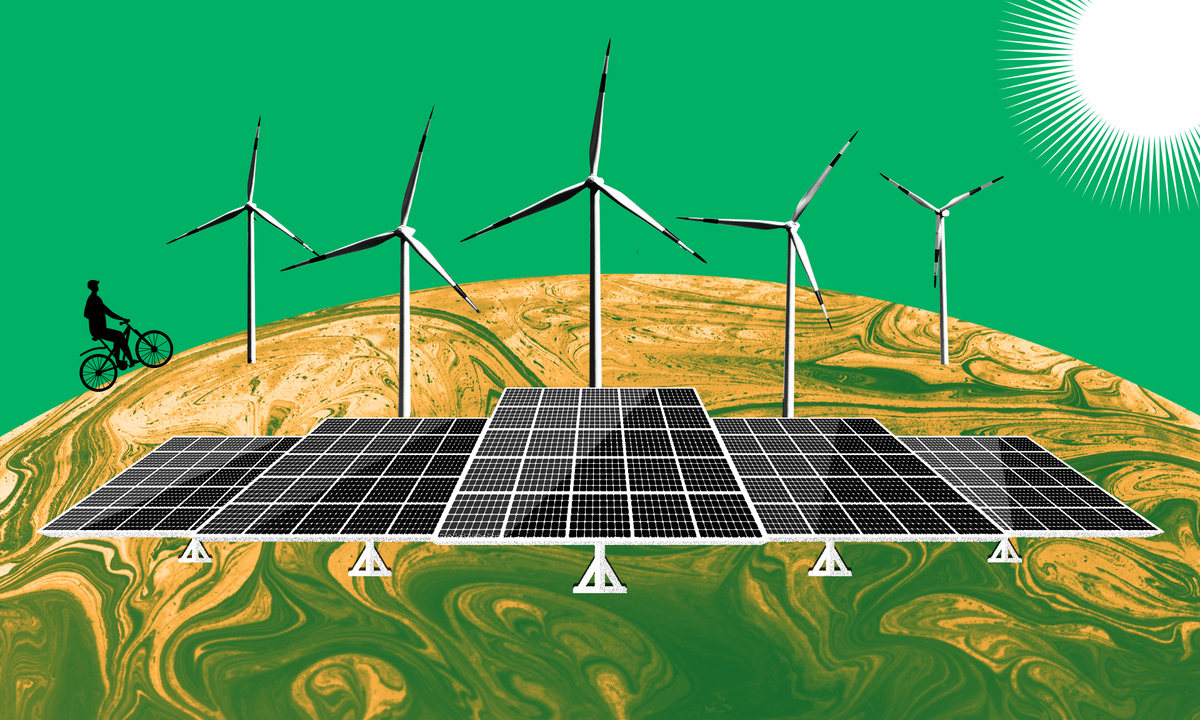Powering the Future: Energy and Renewable Solutions

Renewable energy comes from sources like the sun, wind, and water — resources that won’t run out and don’t pollute our air.
The Dive
Energy is everywhere. It’s the light in your room, the warmth of the sun on your face, and even the food you eat. But what is energy, really? Scientists define it as the ability to do work—like moving, heating, or lighting things up. And here’s something amazing: energy can’t be created or destroyed, only transformed. That means the energy we use today was once something else, and tomorrow, it’ll become something new.
Most of the energy on Earth comes from the sun. Plants turn sunlight into chemical energy through photosynthesis. Fossil fuels like coal and oil? They’re made from ancient plants and animals that stored solar energy millions of years ago. But burning those fuels releases pollution and greenhouse gases that trap heat in Earth’s atmosphere. That’s why we’re turning to renewable energy: clean sources that keep on giving.
Solar panels soak up sunlight and turn it into electricity. Wind turbines capture the motion of the wind and use it to spin generators. Hydropower uses the movement of water, from rivers or reservoirs, to do the same. There’s even geothermal energy from deep within the Earth, and ocean energy that harnesses waves and tides. These methods produce little to no pollution and won’t run out anytime soon.
Engineers play a huge role in making these systems work. They design solar panels that work in cloudy weather, wind turbines that stand taller and spin faster, and smart grids that store energy for when the sun isn’t shining or the wind isn’t blowing. They even build hybrid cars and electric engines to make transportation cleaner. Every breakthrough makes energy cleaner, cheaper, and more available to everyone.
Of course, every energy source has tradeoffs. Dams for hydropower can change ecosystems. Bioenergy, made from plants and waste, still releases some greenhouse gases. That’s why engineers and scientists are always looking for ways to improve technology and reduce harm. The goal? An energy system that works for people and the planet.
You don’t have to be an engineer to make a difference. Turning off lights, biking instead of driving, or supporting clean energy projects all help. When we understand where energy comes from and how it’s used, we can make smarter choices and power a better future.
Why It Matters
Energy affects everything, from the climate to our economy to your morning alarm clock. By shifting from fossil fuels to renewable sources, we reduce pollution, protect natural resources, and build a healthier planet. Engineers are leading this transition with innovation and creativity. Learning how energy works empowers us to make smarter choices for the environment and future generations.
?
What’s the difference between renewable and non-renewable energy?
How does solar energy become electricity?
What are some challenges with wind and hydropower?
How do engineers help us use energy more efficiently?
Why is it important to reduce fossil fuel use?
What can you do to save energy at home or school?
Dig Deeper
A great introduction to renewable energy sources and why they matter for our future.
A look at the infrastructure challenges involved in switching to clean power.
Learn how solar panels became one of the most affordable energy sources on Earth.
Related

Climate Science: How Our Planet Keeps Its Cool… and Why It’s Getting Hotter
Climate science helps us understand how the planet stays warm, why it's getting warmer, and what we can do about it.

Harnessing the Power of Offshore Wind
Offshore wind energy is one of the fastest-growing renewable energy sources, capable of delivering massive amounts of clean electricity right where people live: along coastlines.

Weather Wonders: Observing Clouds and the Water Cycle
Clouds aren’t just fluffy sky art—they’re scientific clues that help us understand weather, climate, and the invisible processes shaping our planet.
Further Reading
Stay curious!
